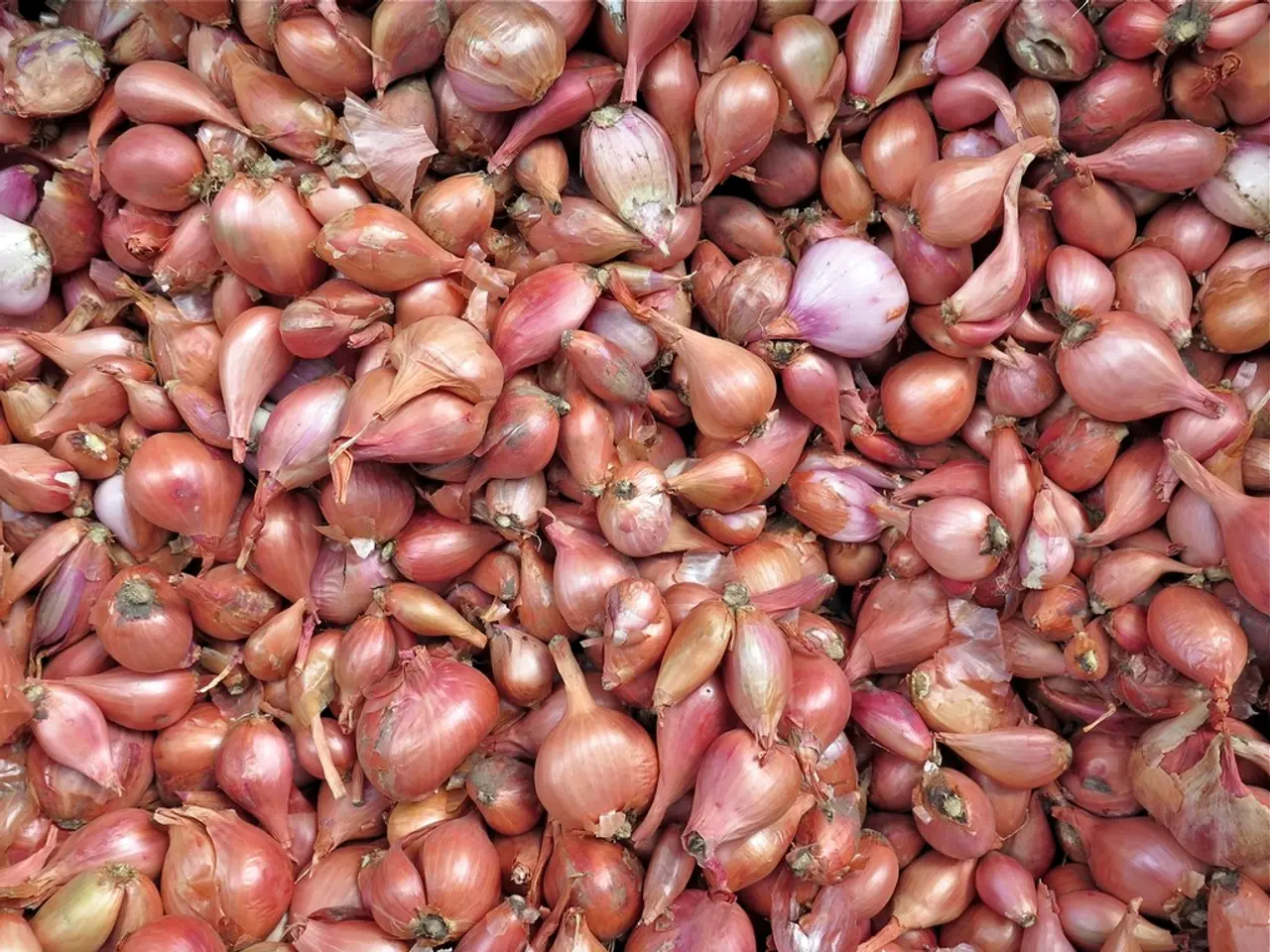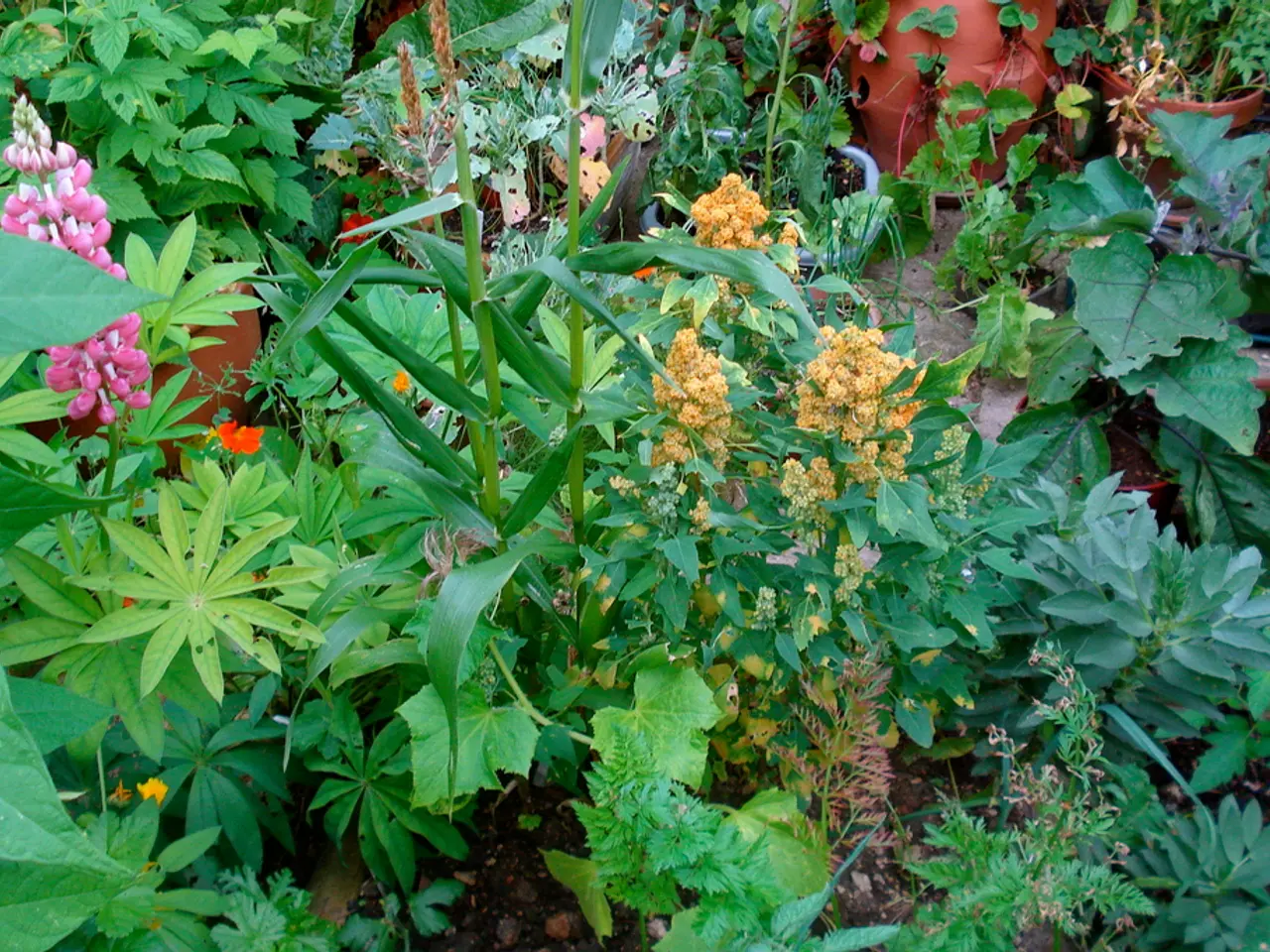Comprehensive Tutorial on Onion Cultivation and Preservation: A Step-by-Step Approach to Gardening Onions
From the sweet and Spanish onion to the humble cooking onion, onions are an essential ingredient in countless dishes. With their versatile flavour and numerous health benefits, growing onions in your home garden can be a rewarding experience. Here's a guide to help you cultivate delicious, long-lasting onions.
Onions thrive in full sun and well-drained, compost-rich soil. The sweet Spanish onion, excellent for salads and onion rings, requires more space to grow and does not store as long as cooking onions. Scallions, or green onions, are a great alternative if you have trouble growing onion bulbs or are simply interested in greens.
Onions can be planted outdoors about four weeks before the final frost day. For easier growth, plant onions in groups of up to 4 seeds in a cube. Onions can be grown from sets (small bulbs), seeds, or transplants. Sets are popular for their higher success rate and quicker maturity, especially in colder climates.
When planting onions in water, keep the roots moist. Space sets or seedlings about 4 inches apart, and rows should be about 12-18 inches apart. Keep the soil consistently moist but not waterlogged, and fertilize with a nitrogen-rich fertilizer early in growth, switching to phosphorus and potassium as bulbs start forming.
Onions need to be cured for several weeks before storage to ensure they are dry. Harvest when tops begin to yellow and fall over. Onions grown from onion sets are best eaten fresh from the garden and do not store as well as onions grown from seeds.
The best onion varieties for home gardeners depend on your day-length region and flavor preferences. Short-day varieties, ideal for southern regions with shorter daylight, include the 'Texas 1015-Y Supersweet', 'Red Creole', 'White Bermuda' and 'Crystal Wax White Bermuda', 'Hybrid Yellow Granex' (Vidalia type), and the Welsh onion. Intermediate or day-neutral varieties, good for mid-latitudes, include 'Candy', 'Southport Yellow Globe', 'Super Star', and 'Purplette'. Long-day varieties, for northern regions with longer daylight, include 'Wethersfield Red' and traditional yellow sweet onions like 'Yellow Sweet Spanish'.
By selecting appropriate varieties for your climate zone and following these growing and curing guidelines, you can achieve large, flavorful onions that store well for months in a home garden. Shallots, with their sweeter taste, are a worthwhile addition to any diet. Onions can still be grown for their greens in a shady location.
Various types of onions are available in white, yellow, and red colours. Onions should not be planted deep; only the roots or lower part of the bulb need to be in the soil. It's essential to avoid storing onions near potatoes, which can cause spoilage.
In conclusion, growing onions in your home garden can be an enjoyable and fruitful endeavour. With the right variety, care, and storage techniques, you can enjoy fresh, flavourful onions all year round. Happy gardening!
Soil enriched with compost is ideal for growing onions, as they thrive in full sun and well-drained soil. Planting onions indoors about four weeks before the final frost day ensures easier growth, with groups of up to 4 seeds planted in a cube. Onions can be grown from sets, seeds, or transplants, with sets being popular for their higher success rate in colder climates.
Onions should not be planted too deep, only the roots or lower part of the bulb should be in the soil. It's crucial to avoid storing onions near potatoes to prevent spoilage. Onions can be harvested when tops begin to yellow and fall over, and onions grown from onion sets are best eaten fresh from the garden and do not store as well as onions grown from seeds.
Onion varieties vary in day-length regions and flavor preferences. Short-day varieties like 'Texas 1015-Y Supersweet' and 'Red Creole' are ideal for southern regions, while intermediate varieties like 'Candy' and 'Southport Yellow Globe' are suitable for mid-latitudes. Long-day varieties like 'Wethersfield Red' and 'Yellow Sweet Spanish' are perfect for northern regions. Shallots, with their sweeter taste, are a worthwhile addition to any diet, and onions can still be grown for their greens in a shady location.
With the right variety, care, and storage techniques, you can achieve large, flavorful onions that store well for months in a home garden. Various types of onions are available in white, yellow, and red colours. By following these growing and curing guidelines, you can enjoy fresh, flavourful onions all year round, making a positive impact on your food-and-drink and home-and-garden lifestyle. Happy gardening!




